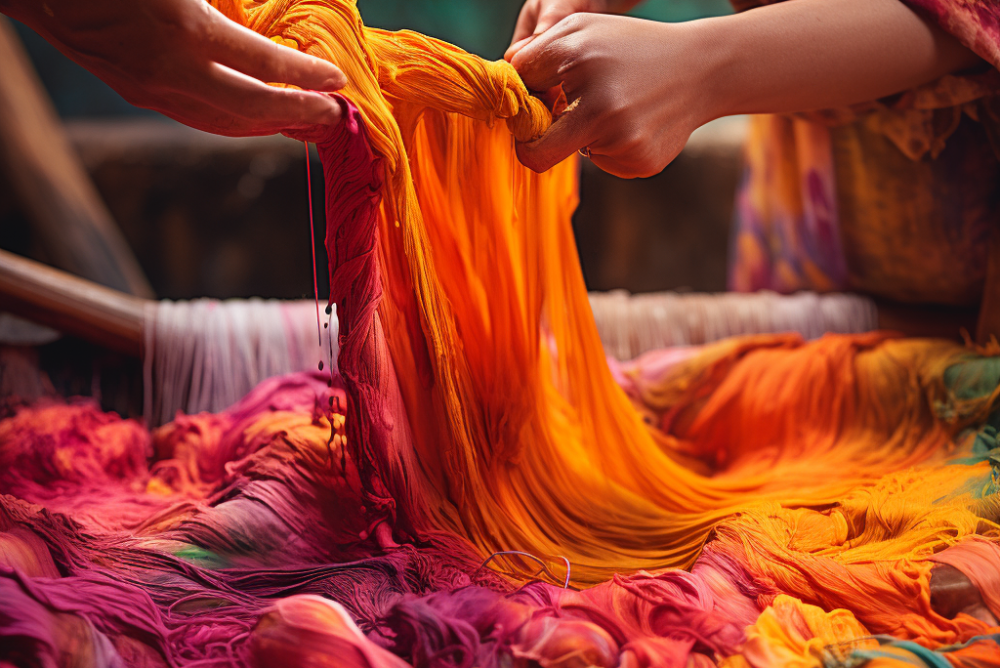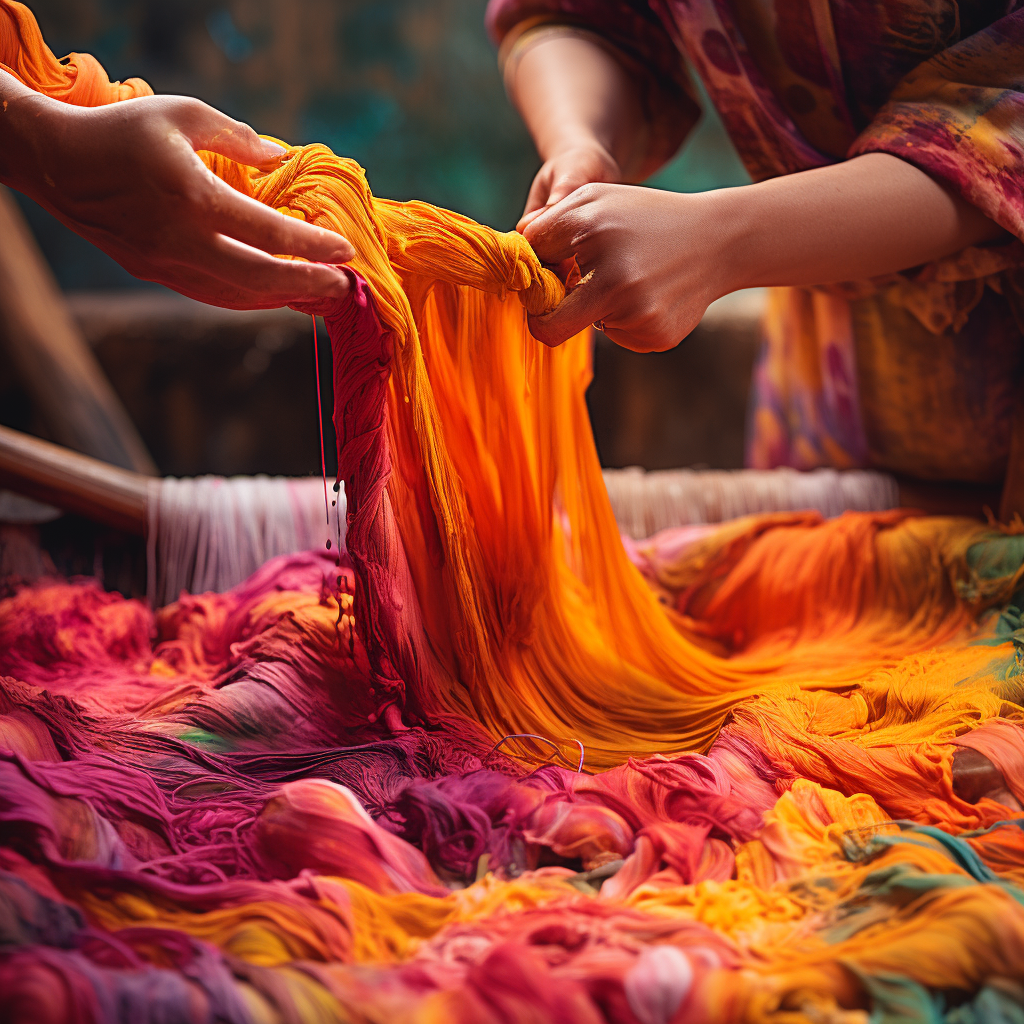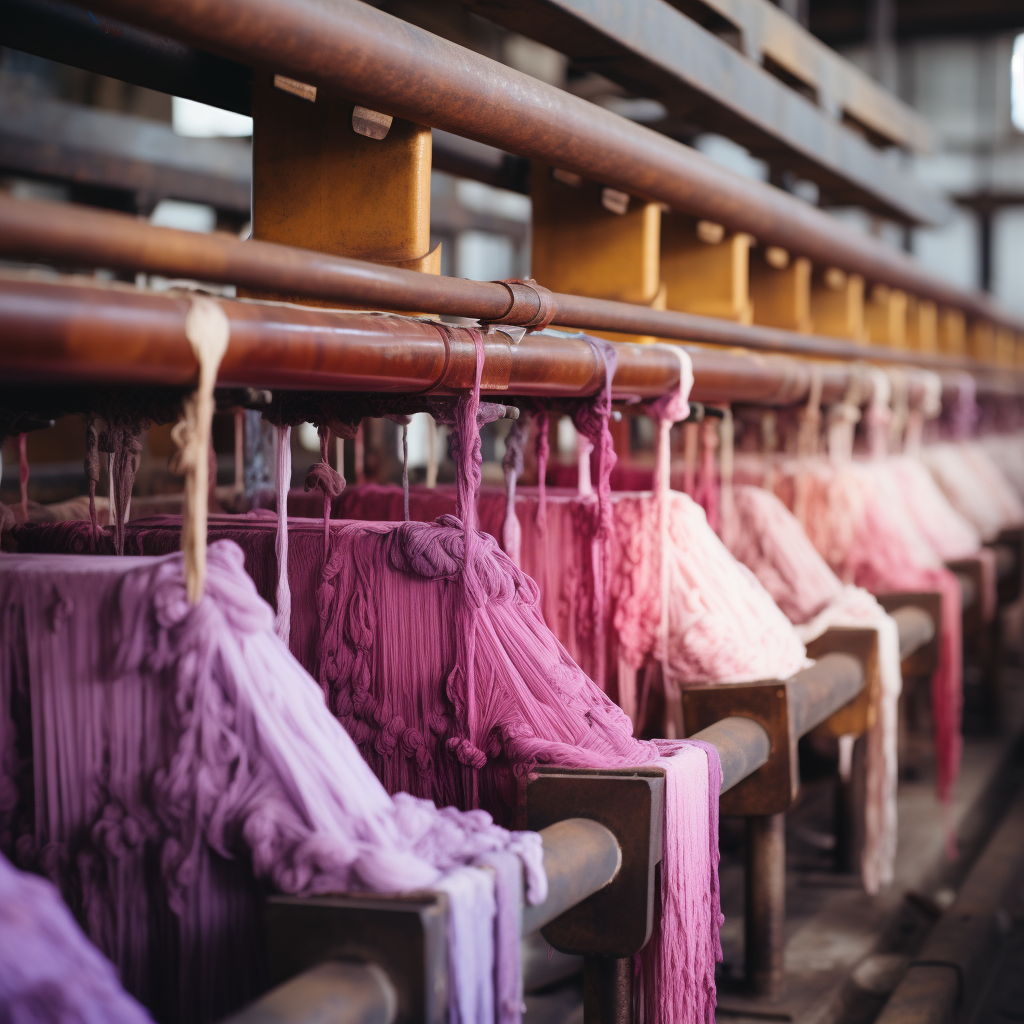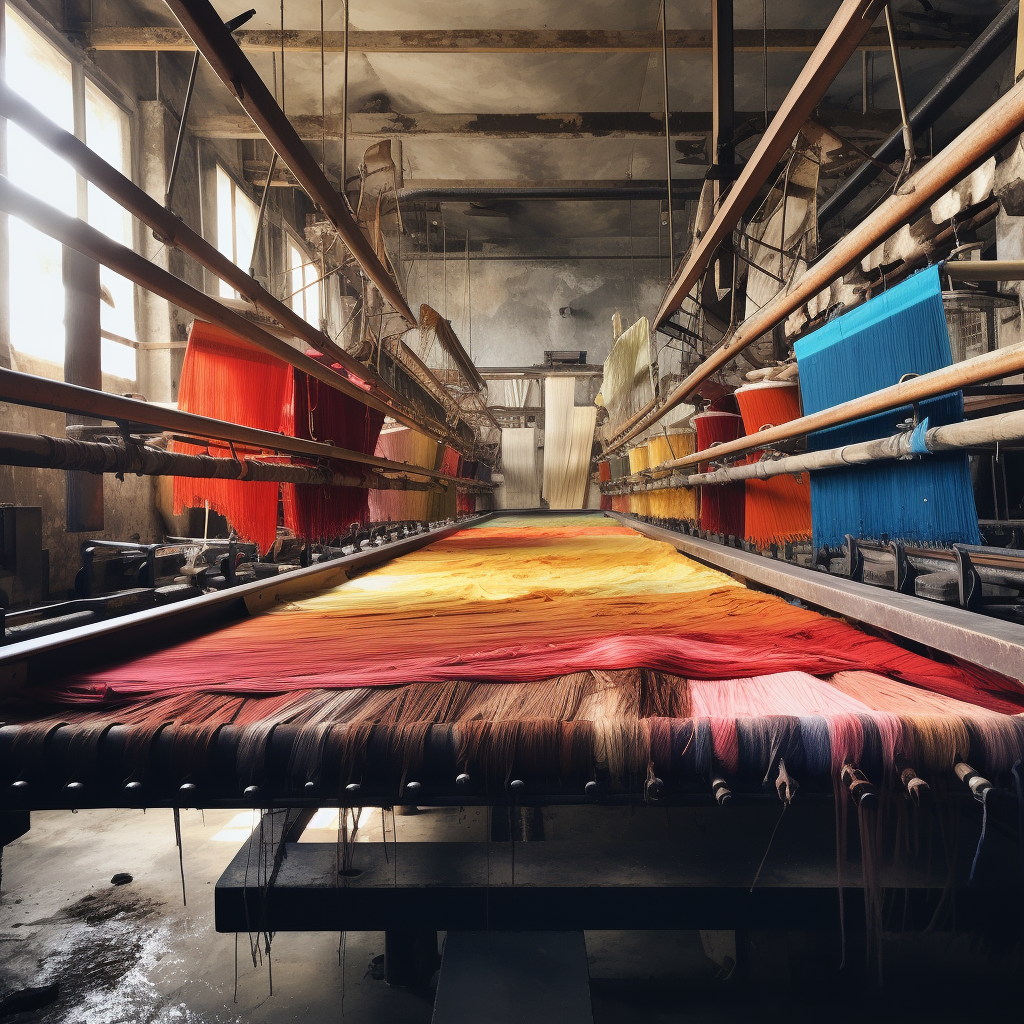Loop Dyeing: Reviving Textile Traditions in Modern Manufacturing


Dyeing, an age-old technique, is integral in the textile industry. Since the ancient times of hand dyeing with natural extracts to the present-day sophisticated machine-led processes, the art of dyeing has witnessed an expansive evolution. Amidst a variety of techniques available today, the Loop Dyeing process stands out due to its unique methodology and resultant benefits. Designed with a specific goal of achieving uniform dyeing, it's both hailed and criticized for specific attributes. This article will delve into the depths of the Loop Dyeing process, discussing its mechanisms, advantages, and shortcomings, making it easier for professionals and enthusiasts to gauge its relevance in today's textile world.
What is the Loop Dyeing Process?
Loop dyeing, also referred to as “rope dyeing,” is one of the primary methods used to dye yarns, especially denim. Unlike other processes where yarn is dyed in a linear or open width form, in loop dyeing, multiple yarns are gathered into a loop or "rope" form. This method involves immersing these yarn loops into dye vats and allowing them to run continuously through a sequence of dye and rinse baths.
The uniqueness of this method lies in its approach. By using a rope-like structure, the yarns are provided with enough room to expand and contract, ensuring they absorb the dye uniformly. The repeated immersion and exposure ensure deep dye penetration, making the resultant color vibrant and long-lasting.
While the basic concept of loop dyeing sounds simple, the entire operation requires precision, consistency, and attention to detail. The specifics of temperature, immersion time, and dye concentration play pivotal roles in determining the quality of the dyed material.
Loop dyeing's claim to fame is majorly due to the denim industry. Denim, with its characteristic blue hue and white core, owes its unique appearance to this process. The technique allows for the outer layers of yarn to be dyed while the core remains untouched, producing the signature fade and wear pattern associated with high-quality denim products.
As we delve further, we'll explore the meticulous steps involved in this dyeing process, weighing its advantages and shortcomings, to provide a holistic understanding of its importance in the textile realm.
The Step-by-Step Process of Loop Dyeing
Loop dyeing, though seemingly straightforward, involves a sequence of steps meticulously followed to ensure a consistent and high-quality result. Here's a detailed breakdown of the process:
1. Preparing the Yarn:
Before dyeing can begin, yarns are wound into long ropes. Multiple threads are grouped, creating a thick loop of yarns. This ensures even dye penetration and reduces the chances of the yarns tangling during the dyeing process.
2. Dye Bath Preparation:
The dye, along with necessary chemicals, is mixed in a vat. This mixture is heated to the required temperature. Consistency in temperature and chemical balance is crucial, as even slight deviations can result in color variations.
3. Immersion:
The prepared yarn ropes are then immersed into the dye bath. They are passed through rollers that ensure they're submerged completely. The duration of immersion can vary based on the desired shade and the type of dye being used.
4. Squeezing:
After immersion, the yarns pass through a set of squeezing rollers. These rollers remove excess dye and ensure even color penetration. This step is pivotal in achieving uniformity in dyeing.
5. Rinsing:
To remove any unabsorbed dye and chemicals, the yarn ropes are rinsed with water. This not only ensures colorfastness but also enhances the yarn's overall feel and texture.
6. Drying:
Post-rinsing, the yarns are subjected to drying. They can be air-dried or passed through a drying chamber. Proper drying is essential to prevent any post-dyeing shrinkage or deformation.
7. Winding:
Once dried, these yarns are wound onto bobbins or spools, making them ready for weaving or knitting.
The loop dyeing process, with its systematic approach, promises deep and uniform color penetration. But like every coin with two sides, this method brings along its set of advantages and disadvantages. As we proceed, we'll juxtapose these to present an unbiased view of its efficacy in the textile domain.

Advantages of Loop Dyeing
Loop dyeing, having cemented its place in the textile industry, especially in the realm of denim manufacturing, boasts numerous advantages. Here are the primary benefits associated with the process:
1. Deep Dye Penetration:
Due to the repeated immersion of yarns in the dye bath, the dye molecules penetrate deeply, ensuring a rich and lasting color. This deep penetration is particularly essential for materials like denim, where the fade and wear over time reveal the underlying yarn color, contributing to the desired aesthetic.
2. Uniform Dyeing:
The rope or loop formation of yarns ensures that each yarn strand is uniformly exposed to the dye solution, resulting in a consistent color across the entire batch of yarns.
3. Reduced Tangling:
Grouping the yarns into loops minimizes their movement during the dyeing process, thus reducing the chances of tangling, which can lead to uneven dyeing or yarn damage.
4. Enhanced Fabric Character:
Loop dyeing often gives the fabric a unique character, especially visible in denim, where the outer surface showcases the dyed color while the inner core remains relatively undyed. This creates a distinctive fading pattern over time.
5. Eco-friendly Option:
Loop dyeing systems are often designed to be more environmentally friendly. The method typically uses fewer chemicals and less water than other dyeing processes, and the used water can be more easily treated and recycled.
6. Versatility:
While predominantly associated with denim, loop dyeing isn't restricted to it. This method is adaptable and can be utilized for dyeing various types of yarns, making it versatile in the broader textile industry.
7. Cost-effective in Bulk:
For large-scale productions, loop dyeing can be more cost-effective than other methods. The continuous process, when optimized, can handle vast amounts of yarn simultaneously, bringing down per-unit dyeing costs.
These advantages undeniably make loop dyeing a favored choice in specific niches of the textile industry. However, no process is without its challenges. In the interest of a balanced view, our next segment will shed light on the disadvantages associated with loop dyeing.
Disadvantages of Loop Dyeing
While loop dyeing offers numerous benefits, it is essential to consider its limitations. These drawbacks might influence the decision-making process when choosing the most appropriate dyeing method for a particular application. Here are the main disadvantages associated with loop dyeing:
1. Limited to Yarn Dyeing:
Loop dyeing is primarily a yarn dyeing process, making it unsuitable for dyeing finished fabrics or garments. Industries or designers looking for garment dyeing might need to explore other techniques.
2. Initial Setup Cost:
Setting up a loop dyeing unit involves substantial initial investment. The machinery and infrastructure required can be expensive, making it a significant decision for smaller manufacturers.
3. Complexity:
The process, while systematic, can be complex. Ensuring uniformity, maintaining the right temperature, and balancing chemicals require expertise. Inadequate oversight can lead to inconsistent results.
4. Limited to Certain Yarn Types:
All yarns might not be suitable for loop dyeing. Some delicate or specialty yarns may not withstand the process, limiting its applicability in diverse textile segments.
5. Possible Yarn Strain:
Despite measures to prevent tangling, the continuous movement, squeezing, and winding can sometimes strain the yarn, potentially impacting its strength or texture.
6. Energy Consumption:
While loop dyeing can be more eco-friendly in terms of water and chemical usage, it can be energy-intensive, especially when heating large dye baths and operating drying chambers.
7. Scale Dependency:
Loop dyeing becomes cost-effective mainly at large scales. For smaller batches or custom dyeing, other methods might prove more economical.
Having explored both the strengths and limitations of loop dyeing, it becomes evident that while the process offers unique benefits, especially for specific applications like denim manufacturing, it may not be universally ideal. Decisions to adopt this method should factor in the specific needs, scale, and resources of the textile unit or designer.
Comparing Loop Dyeing with Other Dyeing Techniques
The textile industry is replete with various dyeing methods, each bringing its unique attributes to the table. To understand where loop dyeing stands in this vast spectrum, let's juxtapose it against some other prevalent dyeing techniques:
1. Loop Dyeing vs. Jet Dyeing:
Method: While loop dyeing involves the yarn being in a rope form, jet dyeing dyes fabric in its open width form.
Application: Jet dyeing is more versatile and can be used for both yarns and fabrics, whereas loop dyeing primarily focuses on yarn.
Finish: Jet dyeing can sometimes lead to a smoother finish, especially for fabrics, while loop dyeing ensures deeper yarn penetration.
2. Loop Dyeing vs. Beam Dyeing:
Method: Beam dyeing involves wrapping yarns or fabrics around a perforated beam, through which dye is then circulated. Loop dyeing, in contrast, immerses yarn ropes into dye vats.
Uniformity: Beam dyeing often provides a more uniform dye given its controlled circulation, but loop dyeing offers the unique characteristic fade of denim.
3. Loop Dyeing vs. Pad Dyeing:
Method: In pad dyeing, fabrics are passed through a padded solution of dyes, ensuring dye transfer via pressure. Loop dyeing's approach, as discussed, is immersion-based.
Efficiency: Pad dyeing is swift and can be more energy-efficient for certain fabrics, but it might not achieve the depth of color that loop dyeing can offer on yarns.
4. Loop Dyeing vs. Jig Dyeing:
Method: Jig dyeing involves moving fabric back and forth in a dye bath using rollers. Loop dyeing focuses on the continuous movement of yarn ropes.
Flexibility: Jig dyeing is more flexible in terms of fabric width and type, while loop dyeing excels in dye depth and characteristic denim appearance.
From this comparison, it becomes evident that while loop dyeing offers unparalleled advantages in specific contexts (like denim manufacturing), other methods have their strengths depending on the material type, desired finish, and production scale.
While these are only a few of the many dyeing techniques available, the essence is that the choice of method should be based on the end goal. Loop dyeing, with its unique characteristics, finds its niche, but a comprehensive understanding of alternatives ensures an informed choice in the ever-evolving textile landscape.
With a comparative perspective established, we'll next delve into the practical applications of loop dyeing in today's textile industry.

Practical Applications in Today's Textile Industry
The loop dyeing process, while historically significant, continues to play a pivotal role in modern-day textile manufacturing. Its applications, though deeply entrenched in the world of denim, span across a variety of textiles. Let's explore where and how loop dyeing is making its mark today:
1. Denim Production:
Undoubtedly, the foremost application of loop dyeing is in denim manufacturing. The distinctive blue jeans, with their characteristic fading and wear patterns, owe their look to loop dyeing. The process ensures that only the outer layers of the yarn are dyed, leaving the core relatively untouched. This results in the unique aging pattern of denim where, with wear and wash, the undyed core becomes more visible.
2. Specialty Yarns:
Loop dyeing isn't restricted to denim alone. Certain specialty yarns, which require a unique appearance or specific dye patterns, also utilize this method. This includes some varieties of decorative or craft yarns.
3. Home Textiles:
Certain draperies, upholstery, and even bed linens employ loop-dyed yarns to achieve specific patterns or textures. While not as common as other methods, it's an avenue where loop dyeing's unique attributes can be leveraged.
4. Artisanal Crafts:
In regions with a rich textile heritage, loop dyeing is sometimes used in a more artisanal setup. Craftsmen and artists might use the method, albeit in a more manual and traditional form, to achieve unique colors and patterns on yarns, which are then woven into exquisite textiles.
5. Sustainable Textile Production:
Given the rising focus on sustainable and eco-friendly textile production, loop dyeing is being revisited. Its potential for lower water and chemical consumption makes it a contender in the race towards more environmentally conscious manufacturing.
6. Research & Development:
Loop dyeing, like other textile techniques, is continually evolving. Research institutions and textile innovation labs experiment with the method, tweaking variables, and introducing new technology to make it more efficient, sustainable, and adaptable.
The broad spectrum of loop dyeing applications underlines its relevance in today's textile scenario. While it might not be the go-to method for every textile product, where it fits, it shines. Its combination of historical significance, unique dyeing attributes, and adaptability ensures it remains a vital cog in the textile industry's machinery.
With a grasp of its practical applications, our journey will conclude with a holistic view of loop dyeing's place in the textile domain.
Conclusion: The Lasting Legacy of Loop Dyeing in Textile Manufacturing
Loop dyeing, a process with roots that reach deep into the annals of textile history, has managed to retain its significance even as the industry undergoes rapid technological evolution. This longevity can be attributed to the unique attributes the process brings to the table, particularly the depth of dye penetration and the distinctive fading characteristics it imparts to fabrics like denim.
The global love affair with denim — with its myriad styles, cuts, and finishes — owes much to loop dyeing. The faded jeans, worn and loved by many, are a testament to the process's ability to create dynamic, evolving fabrics. Beyond denim, the method's adaptability has seen it embraced for specialty yarns, home textiles, and artisanal crafts.
However, in an age where sustainability and eco-consciousness are not mere buzzwords but critical imperatives, loop dyeing's potential for reduced water and chemical usage may well be its most significant advantage. As the textile industry grapples with the challenges of sustainable production, methods that align with these values will inevitably come to the fore.
That said, no single dyeing technique, including loop dyeing, can claim to be the panacea for all textile needs. The choice of method will always hinge on the specific requirements of the material, the desired finish, scale of production, and, increasingly, the ecological footprint.
Loop dyeing, with its blend of tradition and innovation, stands as a testament to the industry's ability to evolve while respecting its roots. As manufacturers, designers, and consumers increasingly value authenticity, heritage, and sustainability, techniques like loop dyeing will continue to hold their ground, coloring our world in hues that tell tales of both history and innovation.
With this, we conclude our comprehensive exploration of the loop dyeing process. Textiles, in their vast and varied forms, are more than just materials; they are stories, and processes like loop dyeing play a pivotal role in scripting these narratives.





-500x500.jpg)
-500x500.jpg)
-500x500.jpg)
-500x500.jpg)
-500x500.jpg)